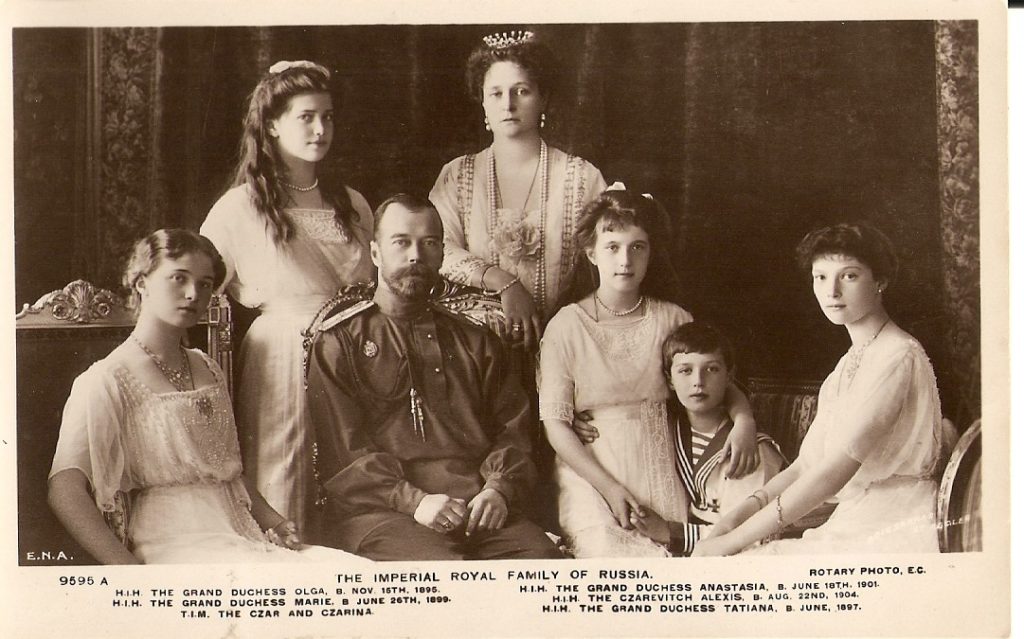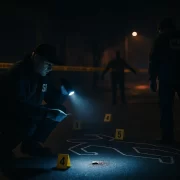The execution of Tsar Nicholas II and his family in July 1918 marked a brutal end to three centuries of Romanov family dynastic rule in Russia, ushering in an era of profound political and social transformation. For decades, the precise"Precise" refers to the degree of closeness or consistency between multiple measurements or values taken under the same conditions. It indicates how well these measurements agree with each other, regardless of whether they are accurate Read Full Definition fate of the imperial family and the location of their remains were shrouded in secrecy, speculation, and state-enforced silence, fueling numerous theories and impostor claims. The eventual discovery of their remains and the subsequent complex identification process represent a landmark intersection of history, archaeology, and forensic science Discover the fascinating field of Forensic Science, the application of scientific principles to legal matters. This post delves into its many disciplines, from DNA analysis to crime scene investigation, its importance in the justice system, Read Full Definition.
Discover the fascinating field of Forensic Science, the application of scientific principles to legal matters. This post delves into its many disciplines, from DNA analysis to crime scene investigation, its importance in the justice system, Read Full Definition.
- Historical Context: The Execution of the Romanovs
- The Discovery of the Remains
- Initial Forensic Examinations: Anthropology and Odontology
- V. The Genetic Revelation: DNA Analysis
- A. Mitochondrial DNA (mtDNA) Analysis – Tracing Maternal Lineages
- B. Nuclear DNA (nDNA) and Short Tandem Repeat (STR) Analysis
- C. Y-Chromosome STR (Y-STR) Analysis – Confirming Paternal Lineage
- VI. Confirming the Lost Children: Identification of Tsarevich Alexei and Grand Duchess Maria/Anastasia
- A. The Initial Mystery of the Two Missing Children
- B. The 2007 Discovery and Multi-faceted Analysis
- C. Conclusive Identification
- D. Settling the “Missing Daughter” Debate
- VII. Addressing the Specters of Doubt: Controversies and Impostors
- A. The Anna Anderson Saga
- B. Scientific Debates and Challenges to Early DNA Findings
- C. Disagreement on the Identity of the Missing Daughter (pre-2007)
- VIII. The Architects of Identification: Key Scientists and Institutions
- A. Dr. Peter Gill and the UK Forensic Science Service (FSS)
- B. Dr. Pavel Ivanov (Russian Academy of Sciences / Engelhardt Institute of Molecular Biology)
- C. Dr. Michael Coble, Dr. Thomas Parsons, and the Armed Forces DNA Identification Laboratory (AFDIL), USA
- D. Russian Forensic Experts
- E. Other Key Institutions and Researchers
- IX. Official Recognition and Lingering Questions
- X. Legacy of the Romanov Identification
- XI. Conclusion: Science, History, and the Final Fate of the Romanovs
This case study details the multifaceted scientific investigations undertaken to identify Tsar Nicholas II, Tsarina Alexandra Feodorovna, and their five children: Olga, Tatiana, Maria, Anastasia, and Alexei. This landmark case study explores how forensic science, including anthropology, odontology, and especially DNA analysis, provided definitive answers about the Romanov family, reshaping history and advancing forensic methodologies worldwide.
Furthermore, this post will explore the controversies and scientific debates that arose during the identification process, acknowledge the key scientists and institutions involved, discuss the official recognition of the remains, and consider the lasting legacy of this extraordinary case. The journey to identify the Romanovs solved a historical enigma and significantly advanced the field of forensic genetics, particularly in the analysis of ancient and degraded DNA DNA, or Deoxyribonucleic Acid, is the genetic material found in cells, composed of a double helix structure. It serves as the genetic blueprint for all living organisms. Read Full Definition.
DNA, or Deoxyribonucleic Acid, is the genetic material found in cells, composed of a double helix structure. It serves as the genetic blueprint for all living organisms. Read Full Definition.
Historical Context: The Execution of the Romanovs
Following the February Revolution of 1917 and Tsar Nicholas II’s abdication, the Romanov family was held under house arrest. After the Bolsheviks seized power in the October Revolution, the family and their loyal retainers were moved first to Tobolsk, Siberia, and then to the Ipatiev House in Yekaterinburg in the Ural Mountains.
On the night of July 16-17, 1918, as anti-Bolshevik White Army forces, bolstered by the Czechoslovak Legion, approached Yekaterinburg, the Ural Regional Soviet, under the leadership of Yakov Yurovsky, ordered and carried out the execution of the imperial family and their attendants. The victims included Tsar Nicholas II, Tsarina Alexandra Feodorovna, their five children – Olga (22), Tatiana (21), Maria (19), Anastasia (17), and Alexei (13) – as well as their physician Dr. Eugene Botkin, valet Alexei Trupp, cook Ivan Kharitonov, and maid Anna Demidova. The execution took place in the basement of the Ipatiev House and was carried out by a Bolshevik firing squad. Historical accounts, including Yurovsky’s own report, detail a brutal and chaotic scene, with multiple shots and bayonets used to ensure the deaths of all victims.

Romanov Empire
The immediate aftermath involved a desperate and initially inept attempt by the executioners to dispose of the bodies and conceal the crime. Pyotr Voykov was tasked with obtaining large quantities of gasoline and sulphuric acid to destroy the remains. The bodies were first transported to a mineshaft known as Ganina Yama. However, this site proved unsuitable for a clandestine burial, and the mine was too shallow. The executioners then retrieved the bodies and, after further attempts to disfigure and destroy them with acid and fire, buried most of them in a shallow mass grave concealed beneath railway ties on Koptyaki Road, a cart track near Yekaterinburg. Crucially, as would be discovered much later, the remains of two of the children, Tsarevich Alexei and one of his sisters, were burned and buried in a separate, smaller grave nearby. This deliberate separation and the attempts at destruction were calculated to prevent the discovery and identification of the victims, a strategy that successfully obscured the full truth for many decades. The Bolsheviks initially only announced the death of Nicholas II, keeping the fate of the rest of the family a state secret. This secrecy, coupled with the executioners’ efforts to obliterate all traces, laid the groundwork for the enduring mystery and the eventual complex forensic challenge of identification.
The Discovery of the Remains
The clandestine graves of the Romanov family remained hidden for over half a century, their discovery and subsequent investigation unfolding in two distinct phases, heavily influenced by the shifting political landscape in Russia.
A. The First Grave (Yekaterinburg, 1991)
In 1979, amateur historian Alexander Avdonin and filmmaker Geli Ryabov, guided by historical accounts including Yurovsky’s notes, secretly located the primary mass grave on Koptyaki Road near Yekaterinburg. Fearing repercussions from the Soviet authorities, who officially maintained silence or propagated misinformation about the Romanovs’ fate, they kept their discovery secret for a decade.
The era of glasnost under Mikhail Gorbachev created an opening for a more transparent examination of Soviet history. In 1989, the existence of the remains was publicly acknowledged. It was not until July 1991, following the dissolution of the Soviet Union, that Russian authorities conducted an official exhumation of the grave. This political shift was indispensable; without the collapse of the Soviet regime and its tight control over historical narratives, a formal investigation into such a sensitive matter would have been inconceivable. The exhumation revealed nine sets of skeletal remains. Initial assessments suggested these belonged to the Tsar, Tsarina, three of their daughters, and four attendants, but two of the imperial children were conspicuously absent.
B. The Second Grave (near Yekaterinburg, 2007)
The mystery of the two missing children—Tsarevich Alexei and one of the Grand Duchesses—persisted for another 16 years, fueling speculation that they might have survived the massacre. In the summer of 2007, a group of amateur archaeologists, inspired by the ongoing historical interest and Yurovsky’s account of a separate burial site, discovered a second, smaller grave containing burned bone fragments and teeth approximately 70 meters from the main grave. These remains, consisting of 44 bone fragments and teeth, appeared to belong to two young individuals, consistent with the ages of Alexei and one of his sisters. This discovery was pivotal, offering the potential to account for all members of the imperial family finally.
Initial Forensic Examinations: Anthropology and Odontology
Before the advent of definitive DNA analysis, traditional forensic disciplines—anthropology and odontology—played a crucial role in the initial assessment of the Romanov remains. These methods provided a foundational framework of presumptive evidence Evidence is any form of proof, such as objects, materials, or scientific findings, presented to establish or disprove a fact in a legal proceeding. It is used to reconstruct events and link or exclude individuals Read Full Definition that guided subsequent genetic investigations. However, the inherent limitations of these techniques, especially with commingled and degraded remains of closely related individuals, also highlight the necessity for more conclusive molecular methods.
Evidence is any form of proof, such as objects, materials, or scientific findings, presented to establish or disprove a fact in a legal proceeding. It is used to reconstruct events and link or exclude individuals Read Full Definition that guided subsequent genetic investigations. However, the inherent limitations of these techniques, especially with commingled and degraded remains of closely related individuals, also highlight the necessity for more conclusive molecular methods.
A. Forensic Anthropological Analysis
Forensic anthropology involves analyzing skeletal remains to determine biological profiles, including age, sex, stature, and any unique identifying features or trauma.
- Analysis of the 1991 Remains (First Grave): Russian forensic authorities, assisted by international experts, including US anthropologists, conducted initial examinations. The nine skeletons recovered were tentatively identified as belonging to five females and four males. Skeletal indicators of age and sex were broadly consistent with the known members of the Romanov family and their retinue present at the execution, minus two children. A significant anthropological finding was examining Skull #4, presumed to be Tsar Nicholas II. X-ray studies revealed two longitudinal grooves, evidence of a healed fracture consistent with a saber blow, corresponding to a known assassination attempt on Nicholas when he was Tsarevich in Japan in 1891. This provided a strong individualizing characteristic. Russian experts like Dr. Sergey Nikitin employed facial reconstruction
Facial approximation refers to the process of estimating the living facial image of a person from the evidence presented by a recovered skull. Read Full Definition and photographic superimposition techniques to link the skulls to known photographs of the Romanovs. While these methods offered compelling visual correlations, their scientific certainty is limited and not always admissible in all jurisdictions. For instance, Russian experts identified Skeleton #6 as Anastasia, while some US experts, such as Dr. William Maples, initially suggested Anastasia was one of the missing children from the first grave. This disagreement underscored the challenges in distinguishing between the Grand Duchesses based solely on skeletal morphology.
- Analysis of the 2007 Remains (Second Grave): The 44 severely burned and fragmented bone pieces discovered in 2007 were subjected to anthropological analysis by both Russian and US experts. Examination of duplicative anatomical units, such as the midline portion of the occipital bone, indicated the presence of a minimum of two individuals. One individual was determined to be a young female, with a biological age of approximately 15-19 years, based on features like the sciatic notch dimensions. Based on the incipient breadth of the sciatic notch, the other individual was assessed as likely male, with a biological age ranging from 12-15 years. These age estimations were consistent with those of Tsarevich Alexei and one of his younger sisters (Maria or Anastasia). Due to the severe fragmentation and burning, it was not possible to determine racial or ancestral type, or to estimate living stature from these remains.
B. Forensic Odontology
Forensic odontology, the application of dental science to legal investigations, is crucial for identification due to human dentition’s unique and durable nature. Standard methods include documenting dental status, performing radiological examinations, and comparing post-mortem findings with ante-mortem (pre-death) dental records.
- Romanov Case – 1991 Grave: Dental examinations of the remains from the first grave, notably by Russian expert Dr. Vyacheslav Popov, provided significant clues. These examinations confirmed kinship among five of the individuals. The four female skeletons presumed to be the Tsarina and three of her daughters (Olga, Tatiana, and Anastasia, according to Popov’s assessment of the youngest) exhibited a “special tooth and jaw structure”. A particularly striking familial trait was a turned fourth lower right tooth present in each of these four females, considered an important indicator of kinship. Furthermore, evidence of hereditary early-onset tooth decay was observed in all of them, with the youngest girl (identified by Popov as Anastasia from Skeleton #6) having fillings in nearly all her teeth. The quality and nature of the dental work also pointed towards high social status. The presence of silver amalgam fillings, uncommon for ordinary citizens of that era, and in the case of Skeleton #7 (presumed Tsarina Alexandra), sophisticated porcelain fillings with gold rods and platinum, strongly suggested access to personal and high-quality dental care consistent with that of the imperial family.
- Romanov Case—2007 Grave: In the second grave, the discovery of three silver amalgam fillings on the crowns of two molars also suggested an aristocratic status for at least one of the individuals buried there.
- Pre-mortem Records Comparison: While forensic odontology ideally relies on direct comparison of post-mortem dental findings with specific ante-mortem dental charts and X-rays, the available information on the Romanov case emphasizes the significance of “characteristic fillings,” specific tooth positions, and hereditary dental traits. Some sources mention “odontological identification” generally for the Romanovs and the comparison of ante-mortem and post-mortem dental records as a standard forensic practice. However, detailed, explicit comparisons to comprehensive pre-mortem dental charts of each Romanov family member for the 1991 remains are not extensively documented in the provided research, with a greater focus placed on consistency with expected aristocratic dental care and observed familial traits. For example, one primary DNA analysis paper reportedly did not mention using pre-mortem dental records for the 1991 identification, focusing instead on genetic evidence.
The initial anthropological and odontological examinations were thus indispensable in building a compelling, albeit presumptive, case. They established the number of individuals, their sexes, approximate ages, familial groupings, evidence of trauma consistent with historical accounts (like the Tsar’s head injury), and indicators of high social status. These findings strongly suggested that the remains were indeed those of the Romanovs and their retinue, providing a critical foundation upon which the more definitive DNA analyses would build. The debates that arose from these initial findings, such as the identity of the specific missing daughter, also highlighted the inherent limitations of relying solely on morphology for closely related individuals of similar age, thereby underscoring the imperative for genetic confirmation. The synergy between these traditional forensic disciplines and the emerging power of DNA technology became a hallmark of the Romanov investigation.
The following table summarizes key anthropological and dental findings for the Romanov family remains:
Table 1: Key Forensic Anthropological and Dental Findings for the Romanov Family Remains
| Skeleton ID / Grave | Presumed Identity (Often Initial/Contested) | Key Anthropological Observations | Significant Dental Characteristics |
|---|---|---|---|
| 1991 Grave (First Grave) | Nine skeletons: 4 male, 5 female. Five related, four unrelated. | ||
| Skeleton #4 | Tsar Nicholas II | Male; evidence of healed saber wound on skull (two longitudinal grooves). | Consistent with high-status dental care. |
| Skeleton #7 | Tsarina Alexandra Feodorovna | Female, age 46. | Extensive, high-quality dental work: porcelain fillings with gold rods and platinum. Shared familial dental traits with daughters (turned 4th lower right tooth, early decay). |
| Skeleton #3 | Grand Duchess Olga Nikolaevna | Female, age 22. | Shared familial dental traits (turned 4th lower right tooth, early decay); silver amalgam fillings indicating high status. |
| Skeleton #5 | Grand Duchess Tatiana Nikolaevna | Female, age 21. Russian experts: 18-22 years, average height. 170.05±5.7cm. | Female, age 21. Russian experts: 18-22 years, height average. 170.05±5.7cm. |
| Skeleton #6 | Grand Duchess Anastasia/Maria | Female, age 17 (Anastasia by Russian experts ) or 19 (Maria). Russian experts: 16-20 years, height avg. 161.8±3.4cm. | Youngest daughter (Popov: Anastasia) had fillings in nearly all teeth. Shared familial dental traits (turned 4th lower right tooth, early decay); silver amalgam fillings indicating high status. |
| 2007 Grave (Second Grave) | 44 bone fragments, minimum two individuals. Severely burned. | ||
| Male Individual | Tsarevich Alexei Nikolaevich | Likely male, biological age approx. 12-15 years (incipient sciatic notch breadth). | Three silver amalgam fillings on two molars from the grave (could belong to either individual), suggesting aristocratic status. |
| Female Individual | Grand Duchess Maria/Anastasia | Female, biological age approx. 15-19 years (sciatic notch dimensions). | (See above regarding silver amalgam fillings). |
Note: Presumed identities and ages for the 1991 grave daughters sometimes varied between Russian and US experts prior to full DNA confirmation of all children.
V. The Genetic Revelation: DNA Analysis
The application of DNA analysis to the Romanov remains marked a turning point in the investigation. It offered a level of certainty that traditional forensic methods alone could not achieve, particularly given the age and degradation of the samples. The process involved multiple types of DNA analysis and rigorous, iterative verification by international teams of scientists.
A. Mitochondrial DNA (mtDNA) Analysis – Tracing Maternal Lineages
Mitochondrial DNA is inherited exclusively from the mother. It exists in high copy numbers within each cell, making it particularly useful for analyzing old or degraded biological samples where nuclear DNA may be scarce or damaged. Analysis typically focuses on hypervariable regions, such as the D-loop.

- Tsarina Alexandra and the Children (1991 Grave): Samples from the skeleton presumed to be Tsarina Alexandra (Skeleton #7) and three female children (Skeletons #3, #5, #6, later identified through combined evidence as Olga, Tatiana, and one other daughter) were analyzed. Their mtDNA sequences matched the exact match of a living maternal relative, HRH Prince Philip, Duke of Edinburgh. Prince Philip is the grandnephew of Tsarina Alexandra, and both share Queen Victoria as a direct maternal ancestor. This provided very strong evidence for the identities of the Tsarina and three of her daughters.
- Tsar Nicholas II (1991 Grave): The mtDNA from Skeleton #4, presumed to be Tsar Nicholas II, was compared with that of living maternal relatives descended from his maternal grandmother, Louise of Hesse-Cassel. These relatives included the Duke of Fife and Princess Xenia Cheremeteff Sfiri. In the Tsar’s sample, a significant finding was a rare point heteroplasmy—the presence of two different nucleotides (C and T) at position 16169 of the mtDNA control region. At the time of the initial analyses in the early 1990s, mtDNA heteroplasmy was considered an exceptionally rare phenomenon. Its detection in the putative Tsar’s remains initially sparked controversy and raised questions about sample contaminationContamination - The unwanted transfer of material from another source to a piece of physical evidence. The inadvertent touching of a weapon, thereby adding fingerprints to it is an example of evidence contamination. Read Full Definition or the findings’ authenticity. A critical step was taken to address these doubts and provide robust confirmation of the Tsar’s identity: the exhumation of the remains of Tsar Nicholas II’s brother, Grand Duke George Alexandrovich, who had died in 1899. Grand Duke George’s mtDNA analysis revealed the exact same C/T heteroplasmy at position 16169, albeit in different ratios (the Tsar was predominantly C with a lesser T, while his brother was predominantly T with a lesser C). This independent verification from a close, historically confirmed relative was pivotal. Given this shared rare genetic feature, the likelihood ratio that the recovered remains were related to the Tsar’s brother was calculated to be an astounding 300,000,000 to 1. This effectively silenced much of the skepticism surrounding the heteroplasmy and provided extremely strong evidence that Skeleton #4 was indeed Tsar Nicholas II.
- mtDNA Analysis of the 2007 Remains (Alexei and Sister): When the remains from the second grave were discovered in 2007, mtDNA analysis was again crucial. The mtDNA profiles generated from these remains (specifically samples 144.1, 146.1, and 147, representing the two children) matched the mtDNA profile of Tsarina Alexandra and the three daughters identified from the first grave and Prince Philip. This confirmed that the female child from the second grave was maternally related to the Tsarina and her other daughters.
B. Nuclear DNA (nDNA) and Short Tandem Repeat (STR) Analysis
Nuclear DNA, inherited from both parents, allows for determining direct familial relationships. Short Tandem Repeat (STR) analysis examines specific polymorphic lociA locus is the precise position of a gene on a chromosome. Different alleles of the same gene occupy the same locus. Read Full Definition in nDNA, which are short, repeated sequences that vary in length between individuals. This technique can determine sex (e.g., using the amelogenin gene
 Genes are DNA segments (or RNA in some viruses) that dictate cellular processes, traits, and hereditary information, promoting genetic diversity and evolution in living organisms. Read Full Definition) and establish parent-child relationships. The Romanov investigation pioneered STR analysis to such aged and degraded skeletal material, demonstrating its power beyond contemporary forensic cases.
Genes are DNA segments (or RNA in some viruses) that dictate cellular processes, traits, and hereditary information, promoting genetic diversity and evolution in living organisms. Read Full Definition) and establish parent-child relationships. The Romanov investigation pioneered STR analysis to such aged and degraded skeletal material, demonstrating its power beyond contemporary forensic cases.
- 1991 Grave: Initial DNA-based sex testing and STR analysis (using five STR markers at first) performed on the nine skeletons from the first grave confirmed the anthropological assessment of four males and five females. More importantly, these analyses established that five of the skeletons belonged to a single family group—two parents and three female children—while the remaining four were unrelated individuals, consistent with the Romanovs and their attendants. The probability that these five individuals were the Romanov family was determined to be over 98.5%.
- 2007 Grave and Re-analysis: The discovery of the second grave prompted re-analysis of the remains from the first grave alongside the new samples. Autosomal STR profiles were generated from the remains of the two children found in 2007. When these were compared with the re-analyzed and more extensive STR profiles of Tsar Nicholas II and Tsarina Alexandra from the 1991 grave, the results unequivocally confirmed that the Tsar and Tsarina were the biological parents of these two children. This established the parentage for all five Romanov children. The statistical significance of this finding was immense, with the likelihood ratio supporting this parentage being 4.36 trillion times more probable than the alternative hypothesis that the children were unrelated to the Tsar and Tsarina.
C. Y-Chromosome STR (Y-STR) Analysis – Confirming Paternal Lineage
The Y-chromosome is passed directly from father to son with minimal change, making Y-STR analysis a powerful tool for confirming paternal lineage.
- Tsar Nicholas II and Tsarevich Alexei: A Y-STR profile consisting of 17 loci was successfully generated from bone sample 146.1 (presumed to be Tsarevich Alexei from the 2007 grave) and from a tooth of Tsar Nicholas II (recovered from the 1991 grave). These two profiles were an exact match across all 17 Y-STR markers, strongly indicating a father-son relationship. To further solidify this paternal link, the Y-STR profiles of the Tsar and Tsarevich were compared to those of Andrew Andreevich Romanov, a living, distantly related paternal cousin of Tsar Nicholas II. An exact match was observed across all 17 Y-STRs among Tsar Nicholas II, Tsarevich Alexei, and Andrew Romanov. Searches of this specific 17-locus Y-STR haplotype in extensive population databases (such as usystrdatabase.org and YHRD) yielded no matches, underscoring the rarity and specificityIn the context of laboratory equipment or analytical techniques, the term "specific" describes the capability of a machine or method to accurately and selectively detect particular molecules or substances while minimizing interference from others. Specificity Read Full Definition of this paternal lineage marker and providing exceptionally strong evidence for the identities of the Tsar and his son.
The identification of the Romanovs was not a singular breakthrough but an iterative scientific endeavor. Initial findings by the pioneering teams of Dr. Peter Gill and Dr. Pavel Ivanov faced understandable scrutiny and skepticism, particularly concerning the Tsar’s mtDNA heteroplasmy and the feasibility of amplifying substantial DNA fragments from such ancient and degraded bones. This led to a crucial phase of multi-laboratory verification. Independent analyses were conducted by several prestigious institutions, including the Armed Forces DNA Identification Laboratory (AFDIL) in the United States (with key figures like Dr. Thomas Parsons and Dr. Michael Coble), the Engelhardt Institute in Moscow, and Dr. Erika Hagelberg’s laboratory at the University of Cambridge. These laboratories re-tested original materials and analyzed new crucial reference samples, such as the remains of Grand Duke George Alexandrovich and archival bloodstains from a shirt worn by Nicholas II during an 1891 assassination attempt in Japan. The concordance of results across these independent investigations, including the confirmation of the Tsar’s heteroplasmy by AFDIL through his brother’s remains and the consistent mtDNA match for Tsarina Alexandra with Prince Philip by multiple labs , systematically addressed the initial doubts. Challenges regarding DNA degradation and amplicon length were met by employing refined ancient DNA techniques, successfully amplifying even longer DNA fragments than initially thought possible. This rigorous, multi-faceted, and international verification process, characterized by critical review and independent reproduction of results, was fundamental in establishing the “virtually irrefutable evidence” that ultimately solved the Romanov mystery. It underscored the self-correcting nature of the scientific method, especially vital in a case of such profound historical significance and public interest.
Table 2: Summary of DNA Evidence for the Romanov Family Members
| Family Member | Grave | Findings | Confirmation Status & Certainty | Key Lab(s) Involved (Initial/Verification) | Tsar Nicholas II | 1991 | mtDNA Haplotype/Key Markers: Point heteroplasmy at 16169 (C/T). <p> Maternal Relative(s) for mtDNA Comparison: Duke of Fife, Princess Xenia Cheremeteff Sfiri (living relatives) ; Grand Duke George Alexandrovich (brother, exhumed) <p> Y-STR Haplotype: Exact match with Alexei and Andrew Romanov (17 loci) <p> Paternal Relative for Y-STR Comparison: Andrew Romanov (living distant cousin) <p> Key Autosomal STR Findings: Confirmed as father of all 5 children | “Virtually irrefutable” ; >98.5% for family group | FSS (UK), Engelhardt Institute (Rus), AFDIL (USA), Cambridge (UK) | Tsarina Alexandra Feodorovna | 1991 | mtDNA Haplotype/Key Markers: Exact match with Prince Philip and daughters <p> Maternal Relative(s) for mtDNA Comparison: HRH Prince Philip, Duke of Edinburgh (grandnephew) <p> Y-STR Haplotype: N/A <p> Paternal Relative for Y-STR Comparison: N/A <p> Key Autosomal STR Findings: Confirmed as mother of all 5 children | “Virtually irrefutable” ; >98.5% for family group | FSS (UK), Engelhardt Institute (Rus), AFDIL (USA) | New cell | Grand Duchess Olga Nikolaevna | 1991 | mtDNA Haplotype/Key Markers: Matched Tsarina and Prince Philip <p> Maternal Relative(s) for mtDNA Comparison: HRH Prince Philip ( via Tsarina) <p> Y-STR Haplotype: N/A <p> Paternal Relative for Y-STR Comparison: N/A <p> Key Autosomal STR Findings: Part of family group; child of Tsar & Tsarina | “Virtually irrefutable” ; >98.5% for family group | FSS (UK), Engelhardt Institute (Rus), AFDIL (USA) | New cell | Grand Duchess Tatiana Nikolaevna | 1991 | mtDNA Haplotype/Key Markers: Matched Tsarina and Prince Philip <p> Maternal Relative(s) for mtDNA Comparison: HRH Prince Philip ( via Tsarina) <p> Y-STR Haplotype: N/A <p> Paternal Relative for Y-STR Comparison: N/A <p> Key Autosomal STR Findings: Part of family group; child of Tsar & Tsarina | “Virtually irrefutable” ; >98.5% for family group | FSS (UK), Engelhardt Institute (Rus), AFDIL (USA) | New cell | Grand Duchess Maria Nikolaevna | 1991 or 2007 (Identity debated initially, then confirmed from one of the graves) | mtDNA Haplotype/Key Markers: Matched Tsarina and Prince Philip <p> Maternal Relative(s) for mtDNA Comparison: HRH Prince Philip ( via Tsarina) <p> Y-STR Haplotype: N/A <p> Paternal Relative for Y-STR Comparison: N/A <p> Key Autosomal STR Findings: Child of Tsar & Tsarina | “Virtually irrefutable” | FSS (UK), Engelhardt Institute (Rus), AFDIL (USA), GMI | New cell | Grand Duchess Anastasia Nikolaevna | 1991 or 2007 (Identity debated initially, then confirmed from one of the graves) | mtDNA Haplotype/Key Markers: Matched Tsarina and Prince Philip <p> Maternal Relative(s) for mtDNA Comparison: HRH Prince Philip ( via Tsarina) <p> Y-STR Haplotype: N/A <p> Paternal Relative for Y-STR Comparison: N/A <p> Key Autosomal STR Findings: Child of Tsar & Tsarina | “Virtually irrefutable” | FSS (UK), Engelhardt Institute (Rus), AFDIL (USA), GMI | New cell | Tsarevich Alexei Nikolaevich | 2007 | mtDNA Haplotype/Key Markers: mtDNA matched Tsarina and Prince Philip <p> Maternal Relative(s) for mtDNA Comparison: HRH Prince Philip ( via Tsarina) <p> Y-STR Haplotype: Exact match with Tsar Nicholas II and Andrew Romanov (17 loci) <p> Paternal Relative for Y-STR Comparison: Andrew Romanov (living distant cousin) <p> Key Autosomal STR Findings: Confirmed as son of Tsar & Tsarina | “Virtually irrefutable” | AFDIL (USA), GMI |
|---|
VI. Confirming the Lost Children: Identification of Tsarevich Alexei and Grand Duchess Maria/Anastasia
The absence of two Romanov children from the 1991 grave discovery was a central point of intrigue and speculation for many years, providing fertile ground for theories of survival, most famously concerning Grand Duchess Anastasia. The 2007 discovery of a second, smaller burial site brought the investigation to the cusp of resolving this lingering question.
A. The Initial Mystery of the Two Missing Children
The exhumation of the Koptyaki Road grave in 1991 yielded nine skeletons. Forensic analysis soon established that these represented Tsar Nicholas II, Tsarina Alexandra, three of their daughters, and four non-family members (their attendants). This meant that Tsarevich Alexei and one Grand Duchess were unaccounted for in this primary burial site. This absence became a focal point of debate. There was disagreement even among forensic anthropologists regarding which daughter was missing from the first grave. Russian experts often contended it was Maria, while some American experts suggested it was Anastasia. This uncertainty only amplified the public’s fascination with the possibility of a surviving Romanov.
B. The 2007 Discovery and Multi-faceted Analysis
The discovery in the summer of 2007 of a second, smaller grave containing heavily burned and fragmented skeletal remains, approximately 70 meters from the first, was a breakthrough. Anthropological assessment indicated these remains belonged to a young male aged approximately 12-15 years and a young female aged approximately 15-19 years, consistent with the ages of Alexei and one of the younger Grand Duchesses at the time of their deaths. A comprehensive forensic DNA analysis was undertaken on these challenging samples. This involved mitochondrial DNA (mtDNA) sequencing, autosomal Short Tandem RepeatA short tandem repeat is a microsatellite with repeat units that are 2 to 7 base pairs in length, with the number of repeats varying among individuals, making STRs effective for human identification purposes Read Full Definition (STR) typing, and Y-chromosome STR (Y-STR) analysis, conducted independently at highly specialized laboratories, including the Armed Forces DNA Identification Laboratory (AFDIL) in the USA and another laboratory referred to as GMI.
C. Conclusive Identification
The results from these diverse DNA analyses were unequivocal:
- The mtDNA extracted from the female child’s remains in the second grave matched the mtDNA profile of Tsarina Alexandra and the three daughters found in the 1991 grave, as well as that of their living maternal relative, Prince Philip.
- Y-STR analysis of the male child’s remains from the second grave demonstrated an exact match with the Y-STR profile of Tsar Nicholas II (from the 1991 grave) and their living paternal relative, Andrew Romanov. This confirmed he was the Tsar’s son.
- Autosomal STR analysis, comparing the profiles from the 2007 remains with those of the Tsar and Tsarina from the 1991 grave, confirmed the parentage of both children. The likelihood that these two individuals were the children of Nicholas and Alexandra was found to be 4.36 trillion times more probable than them being unrelated individuals. The combined weight of this genetic evidence was described as “virtually irrefutable” proof that the remains discovered in 2007 were indeed those of Tsarevich Alexei and one of his sisters. Further DNA testing announced in 2018 provided additional confirmation of these identities.
D. Settling the “Missing Daughter” Debate
While the DNA evidence conclusively identified the female remains from the second grave as a daughter of the Tsar and Tsarina, Dr. Michael Coble of AFDIL noted that DNA analysis alone could not distinguish which specific sister (Maria or Anastasia) it was without having unique reference DNA samples from both Maria and Anastasia independently. However, with three daughters already accounted for in the first grave (Olga, Tatiana, and one of Maria/Anastasia), the identification of a fourth daughter in the second grave, alongside Alexei, meant that all five of the Romanov children had been found. The Russian governmental commission in 1995 had previously suggested, based on their analyses of the first grave, that Maria was the daughter missing from that assemblage. The 2007 discovery and subsequent analyses led to a broader consensus that the remains in the second grave were those of Tsarevich Alexei and Grand Duchess Maria.
The deliberate act of the executioners to separate and attempt to obliterate the bodies of two of the children in a secondary location was a calculated measure designed to sow confusion and make a complete accounting of the victims impossible. This strategy proved effective for nearly nine decades, perpetuating the mystery and allowing impostor narratives to flourish. The eventual discovery of this second grave, a result of persistent local historical inquiry and archaeological dedication , and the successful application of a full suite of advanced DNA technologies to these extremely degraded, burned remains , represent a significant triumph of forensic perseverance. It demonstrates how even meticulous attempts at concealment can ultimately be overcome by scientific progress and unwavering investigative commitment, thereby bringing a crucial element of completeness to the tragic historical record of the Romanov family.
VII. Addressing the Specters of Doubt: Controversies and Impostors
The decades of uncertainty surrounding the Romanovs’ fate naturally gave rise to numerous controversies and impostor claims, the most famous being that of Anna Anderson. The scientific investigations themselves were not without debate, particularly in the early stages of DNA analysis.
A. The Anna Anderson Saga
For much of the 20th century, Anna Anderson captivated global attention with her claim to be Grand Duchess Anastasia Nikolaevna, the youngest daughter of Tsar Nicholas II, supposedly having survived the Yekaterinburg massacre. Anderson first came to public notice in Berlin in 1920 after a suicide attempt, initially refusing to reveal her identity. While many surviving Romanov relatives and those who had known the Grand Duchess dismissed her as an impostor, others were convinced by her demeanor, knowledge of intimate family details, and physical resemblance, including scars she claimed were from the execution. A private investigation in 1927, funded by Tsarina Alexandra’s brother, Ernest Louis, Grand Duke of Hesse, identified Anderson as Franziska Schanzkowska, a Polish factory worker with a history of mental illness. Despite this, and a lengthy, ultimately unsuccessful lawsuit in Germany to prove her identity, her claim gained widespread notoriety.
The advent of DNA technology provided the means to definitively resolve this long-standing debate. In 1994, scientists conducted DNA tests on a preserved tissue sample of Anderson’s (an intestinal biopsy taken during a 1979 operation and stored at a Virginia hospital) and on a lock of her hair. Mitochondrial DNA (mtDNA) was extracted and compared with the mtDNA of the confirmed Romanov remains and that of Prince Philip (a maternal relative of Tsarina Alexandra). The results were conclusive: Anna Anderson’s mtDNA did not match that of the Romanovs. Instead, her mtDNA profile was found to be an exact match with that of Karl Maucher, a great-nephew of Franziska Schanzkowska. This landmark application of DNA analysis provided irrefutable scientific proof that Anna Anderson was not Grand Duchess Anastasia, but indeed Franziska Schanzkowska, bringing an end to one of history’s most compelling impostor sagas.
B. Scientific Debates and Challenges to Early DNA Findings
The initial DNA analyses of the Romanov remains, while groundbreaking, were met with some scientific skepticism, which is a natural part of the scientific process, especially when dealing with novel applications and challenging samples.
- Heteroplasmy in Tsar Nicholas II’s mtDNA: As discussed earlier, the discovery of a C/T point heteroplasmy at nucleotide position 16169 in the mtDNA of the putative Tsar was initially a point of contention. In the early 1990s, mtDNA heteroplasmy was considered a very rare event, and its presence raised concerns about the integrity of the ancient DNA sample or possible contamination with modern DNA. The decisive confirmation of this same rare heteroplasmy in the exhumed remains of Nicholas II’s brother, Grand Duke George Alexandrovich, by independent laboratories like AFDIL, was crucial in validating this finding and substantiating the Tsar’s identification.
- Amplicon Length and DNA Degradation: Another challenge came from scientists, notably Alec Knight and colleagues, who questioned the ability of the initial research team (Gill et al.) to amplify relatively long DNA fragments (e.g., a reported 1,223-base sequence of mtDNA) from skeletal remains that had been buried for over 70 years and subjected to harsh conditions. They argued that ancient DNA would likely be too degraded to yield such long amplicons reliably and suggested that the results might be due to contamination with less-degraded, modern DNA. These criticisms were based on the evolving understanding and standards for ancient DNA work, some of which were established after the initial 1994 publication. However, rebuttals from Gill and Hagelberg, and significantly, later re-testing by Michael Coble’s team at AFDIL and GMI on both the original 1991 grave material and the 2007 grave samples, successfully amplified substantial DNA fragments. For instance, they were able to amplify mtDNA fragments up to 444 base pairs and nuclear STR alleles
Alleles are different forms of a gene resulting from mutations or variations in the DNA sequence or gene expression. They can be dominant (expressed with one copy) or recessive (expressed only with two copies). Read Full Definition up to approximately 375 base pairs. This success was attributed to the use of refined “classic aDNA amplification strategy,” which included increased PCR cycle numbers, the addition of bovine serum albumin (BSA) to counteract inhibitors, and additional polymerase, as well as the possibility that the extremely cold climate of Yekaterinburg (where the ground is typically frozen for many months) may have provided better preservation conditions for the DNA than initially assumed.
- Challenges from Japanese Researchers: Some early challenges to the identification also emerged from Japanese researchers led by Tatsuo Nagai. They claimed that DNA from a handkerchief allegedly stained with Nicholas II’s blood from the 1891 Otsu incident in Japan did not match the DNA from the Yekaterinburg remains. They also reported non-matching mtDNA from purported hair samples of Grand Duke George. However, these studies were largely un-peer-reviewed or published in Japanese-language journals with limited international accessibility. Subsequent reviews and re-analyses suggested that Nagai’s samples were likely contaminated or the interpretations flawed. In contrast, later independent DNA testing by Russian laboratories on the actual blood-stained shirt worn by Nicholas II during the Otsu incident did yield autosomal DNA and Y-STR haplotypes that matched the skeletal remains from Yekaterinburg, further corroborating their authenticity.
C. Disagreement on the Identity of the Missing Daughter (pre-2007)
Prior to the 2007 discovery of the second grave, the fact that only three of the five Romanov children were found in the 1991 grave led to debate among forensic anthropologists as to the specific identity of the missing daughter. As noted previously (Sections IV.A and VI.A), Russian experts often leaned towards Grand Duchess Maria being missing from the first grave, while some US experts suggested it was Grand Duchess Anastasia. This anthropological debate, while superseded by the comprehensive DNA evidence from both graves, contributed to the public uncertainty and the persistence of survival myths.
The Romanov case, with its immense historical weight and the severely compromised nature of the remains, served as a veritable crucible for the burgeoning field of ancient DNA analysis. The samples were not only old (over 70 years at the time of initial analysis) but had also been subjected to attempts at chemical destruction with acid and burning, presenting extreme challenges for DNA recovery and interpretation in the early 1990s. The pioneering work by Dr. Peter Gill’s team involved some of the earliest applications of STR markers to such ancient samples, pushing the boundaries of what was considered possible. They also had to contend with extracting usable DNA from minute quantities, sometimes originating from just a few cells. The scientific controversies that arose, particularly regarding the Tsar’s mtDNA heteroplasmy and the achievable length of DNA amplicons from such degraded material, were not mere academic disputes. They spurred intense methodological scrutiny, further research, and the refinement of laboratory techniques. This led to the development and stringent application of anti-contamination protocols, which are now standard in ancient DNA work. The subsequent successful amplification of longer DNA fragments by teams like Coble’s, using optimized ancient DNA strategies, demonstrated the rapid advancements in the field’s capabilities. Moreover, the case underscored the critical importance of independent verification by multiple laboratories, the use of diverse genetic markers (mtDNA, autosomal STRs, Y-STRs), and the careful sourcing and testing of robust reference samples (such as Grand Duke George’s remains and living relatives). The Romanov identification thus became a high-profile benchmark, helping to “set the standard” for ancient DNA analysis and significantly accelerating the development of sensitive methods for forensic testing with minimal or degraded DNA samples, techniques which are now routinely applied worldwide.
VIII. The Architects of Identification: Key Scientists and Institutions
The successful identification of the Romanov family was not the work of a single individual or laboratory but a complex, multi-year endeavor involving international collaboration and expertise from various scientific disciplines.
A. Dr. Peter Gill and the UK Forensic Science Service (FSS)
Dr. Peter Gill, then at the UK’s Forensic Science Service (FSS), was a central figure in the initial groundbreaking DNA analysis conducted between 1992 and 1994. His team pioneered the application of STR typing to these ancient remains and conducted crucial mtDNA sequencing. Dr. Gill had previously collaborated with Sir Alec Jeffreys, the inventor of DNA fingerprinting, on its forensic applications. Recognizing the high risk of contamination with such old bones that had been handled by many people, Gill’s team developed and implemented strict quality controlQuality control (QC) refers to a series of activities and measures conducted on individual laboratory tests or analyses to verify and ensure the accuracy and reliability of the results. QC is a reactive approach that Read Full Definition protocols, including wearing clean lab coats and facemasks, and physically removing surface contamination from the bones before analysis. The FSS team was also instrumental in the DNA work that disproved Anna Anderson’s claim to be Grand Duchess Anastasia.
B. Dr. Pavel Ivanov (Russian Academy of Sciences / Engelhardt Institute of Molecular Biology)
Dr. Pavel Ivanov, a leading Russian geneticist from the Engelhardt Institute of Molecular Biology (Russian Academy of Sciences), was the primary Russian collaborator with Dr. Gill on the initial DNA investigations. He played a key role in the Russian aspects of the research, including obtaining and preparing samples from the exhumed bones. Dr. Ivanov also later provided bone samples to the Armed Forces DNA Identification Laboratory (AFDIL) for further independent analyses.
C. Dr. Michael Coble, Dr. Thomas Parsons, and the Armed Forces DNA Identification Laboratory (AFDIL), USA
The Armed Forces DNA Identification Laboratory (AFDIL) in Rockville, Maryland, USA, made critical contributions through independent verification and advanced DNA testing. AFDIL, with its extensive experience in identifying U.S. service personnel from past conflicts using degraded skeletal remains , was uniquely positioned for this task. Dr. Thomas J. Parsons and later Dr. Michael D. Coble (Research Section Chief at AFDIL during the analysis of the 2007 remains) led these efforts. AFDIL’s work was particularly important in confirming the Tsar’s mtDNA heteroplasmy by analyzing the remains of his brother, Grand Duke George Alexandrovich , and in the comprehensive DNA testing (mtDNA, autosomal STR, Y-STR) of the remains of Tsarevich Alexei and his sister discovered in 2007.
D. Russian Forensic Experts
Beyond genetics, Russian forensic experts made vital contributions:
- Dr. Sergey Nikitin: A prominent Russian forensic anthropologist, Dr. Nikitin was responsible for the detailed facial reconstructions of the Romanov family members and their servants from the recovered skulls. He was among the first, in August 1991, to confirm the identity of the remains based on anthropological methods.
- Dr. Vyacheslav Popov: A distinguished Russian criminologist and forensic medical examiner, Dr. Popov participated extensively in the examination of the 1991 remains. He highlighted key anthropological evidence, such as the healed saber wound on the Tsar’s skull, and significant dental findings, including familial dental traits and evidence of high-status dental care, which supported the identification. He was also later involved in controversial studies with Japanese researcher Tatsuo Nagai.
E. Other Key Institutions and Researchers
Several other institutions and individuals played important roles:
- Carnegie Mellon University (USA): Was involved in the early identification efforts alongside the FSS.
- University of Cambridge (UK): Dr. Erika Hagelberg’s laboratory independently confirmed the mtDNA results for Tsar Nicholas II, providing crucial validationValidation, often referred to as method validation, is a crucial process in the laboratory when introducing a new machine, technology, or analytical technique. It involves a series of systematic steps and assessments to ensure that Read Full Definition.
- GMI (Genetics and Molecular Research Institute or similar): This laboratory, in conjunction with AFDIL, conducted DNA testing on the remains discovered in the second grave in 2007.
- Russian Governmental Commission on the Identification of the Remains: This official body, established by the Russian government, oversaw the entire investigation, coordinated the efforts of various experts, and ultimately validated and announced the scientific findings.
The resolution of the Romanov family’s fate stands as a testament to the power of international scientific collaboration and the convergence of diverse fields of expertise. The initial core DNA work was a Russo-British partnership between Gill and Ivanov. American laboratories and scientists, particularly from AFDIL and institutions like Carnegie Mellon, along with anthropologists such as Dr. William Maples, provided crucial independent verification, further analyses, and anthropological assessments. The entire process drew upon the skills of geneticists, forensic anthropologists, odontologists, archaeologists, and historians from multiple nations. Furthermore, the provision of DNA reference samples by living relatives from various European royal families, such as Prince Philip, the Duke of Fife, Princess Xenia Cheremeteff Sfiri, and Andrew Romanov, was indispensable for the comparative genetic analyses. No single entity could have unraveled this complex historical puzzle alone. The success stemmed from a global, multidisciplinary approach, facilitated by the changing political climate of the post-Cold War era that allowed for such extensive international cooperation.
IX. Official Recognition and Lingering Questions
Despite the overwhelming scientific consensus on the identity of the Romanov remains, the path to official recognition and universal acceptance has been complex, particularly involving the stance of the Russian Orthodox Church.
A. Russian Governmental Commissions and Reports
Following the 1991 exhumation of the first grave, the Russian government established an official commission to oversee the investigation and identification of the remains. This commission drew upon the expertise of Russian and international scientists. In January 1998, the commission, through the head of Russia’s Forensic Department, formally announced its conclusion: the nine skeletons recovered from the Koptyaki Road grave were definitively those of Tsar Nicholas II, Tsarina Alexandra, three of their daughters (Olga, Tatiana, and Anastasia, with Maria identified as missing from this grave by a 1995 commission report ), and four of their loyal attendants. This conclusion was based on a comprehensive 750-page report that detailed extensive DNA analyses conducted in Russia, the United Kingdom, and the United States, along with skeletal identification data Information in analog or digital form that can be transmitted or processed. Read Full Definition and analysis of the cause of deathThe cause of death refers to the specific injury, disease, or underlying condition that directly leads to an individual's demise. It is a critical determination made by medical professionals, such as Medical Examiners or Coroners, Read Full Definition. Based on these findings, a state funeral was held, and these remains were reinterred in the Peter and Paul Cathedral in St. Petersburg on July 17, 1998, marking the 80th anniversary of their execution.
Information in analog or digital form that can be transmitted or processed. Read Full Definition and analysis of the cause of deathThe cause of death refers to the specific injury, disease, or underlying condition that directly leads to an individual's demise. It is a critical determination made by medical professionals, such as Medical Examiners or Coroners, Read Full Definition. Based on these findings, a state funeral was held, and these remains were reinterred in the Peter and Paul Cathedral in St. Petersburg on July 17, 1998, marking the 80th anniversary of their execution.
After the 2007 discovery of the second grave containing the remains of Tsarevich Alexei and the remaining daughter (generally considered to be Maria), further investigations were conducted by Russian authorities, primarily the Investigative Committee of the Russian Federation. To address lingering doubts, particularly from the Russian Orthodox Church, the remains of Tsar Nicholas II and even his father, Tsar Alexander III, were exhumed in 2015 for additional comparative DNA testing. By 2018, on the eve of the centenary of the executions, the Investigative Committee of the Russian Federation reaffirmed the authenticity of all the Yekaterinburg remains, concluding that they belonged to Nicholas II, his entire family, and their retainers. This was further reconfirmed in 2020 by the Russian Investigative Committee (RIC) after a reported 37 distinct forensic analyses.
B. The Stance of the Russian Orthodox Church (ROC)
Despite the scientific evidence and official state recognition, the Russian Orthodox Church (Moscow Patriarchate) has maintained a position of skepticism and has not, to date, officially and fully recognized the Yekaterinburg remains as the holy relics of the canonized imperial family. The Romanov family members were canonized as passion-bearers by the ROC in 2000 (and earlier, in 1981, by the Russian Orthodox Church Outside Russia).
- Reasons for Skepticism and Conditions for Acceptance: The Church’s reservations stem from a variety of factors. Initially, there were concerns about the thoroughness of the early investigations and the manner in which the remains were handled. The ROC has consistently called for exhaustive examinations that go beyond DNA analysis, including deeper historical and archival research, graphological analysis of documents like Yurovsky’s note, and investigation into alternative theories, such as the complete destruction of the bodies at the Ganina Yama mineshaft or even the possibility of a “ritual killing” – a highly controversial suggestion raised by some Church figures. There has also been an undercurrent of distrust concerning the political context of the initial identifications during the Yeltsin era, with some within the Church feeling that the truth about such sacred relics could not have been revealed under a secular, democratic government. The historical position of the previous Patriarch, Alexei II, who notably snubbed the 1998 state funeral and had the remains buried as “unknown,” has cast a long shadow, with his successor, Patriarch Kirill, potentially hesitant to directly contradict his predecessor’s stance for fear of creating divisions within the Church, particularly among its more conservative factions. Some elements within the ROC adhere to the belief that the bodies were entirely incinerated at Ganina Yama, rendering the Porosenkov Log remains “false relics”.
- Ongoing Investigations and Current Position: At the Church’s request, the Russian state reopened its criminal investigation into the remains in 2015, which included the exhumation of Tsar Alexander III for comparative DNA testing with Nicholas II. Despite the Investigative Committee’s subsequent confirmations of authenticity in 2018 and 2020 , the ROC has yet to issue a final, official pronouncement recognizing the remains. Patriarch Kirill has emphasized the gravity of the decision, stating that the Church “has no right to make any mistake on this question” and, as of relatively recent reports, has indicated that the Church “has not formulated a position on the results of the investigation”. The ultimate decision rests with the ROC’s Council of Bishops, which has had to postpone its convening on this matter. While some sources from early 2020s suggest an impending recognition by the ROC , others point to continued deep divisions and official silence. As of early 2024, the official position remains one of continued deliberation.
- Impact of Non-Recognition: The most tangible consequence of the ROC’s stance is that the remains of Tsarevich Alexei and Grand Duchess Maria, discovered in 2007 and scientifically identified, have not yet been buried alongside the rest of their family in the Peter and Paul Cathedral. They are currently held in a Russian state archive, awaiting a resolution that would allow for their interment with full religious honors recognized by the Church.
The Romanov case presents a fascinating study in the divergence between scientific certainty and institutional acceptance. While multiple international and Russian laboratories, employing a battery of forensic techniques including advanced DNA analysis, anthropology, and odontology, have established the identity of the Romanov remains with an exceptionally high degree of scientific probability , and Russian state authorities have officially accepted these findings , the Russian Orthodox Church continues to withhold its full, official recognition. The Church’s criteria for acceptance appear to transcend the standard scientific thresholds of evidence. They incorporate deeply held historical interpretations (such as the belief in the complete destruction of the bodies at Ganina Yama ), profound theological considerations (given that the family members are canonized as saints and passion-bearers ), and concerns about alternative narratives like “ritual murder” or the need for an almost metaphysical level of certainty, as articulated by Patriarch Kirill’s statement about having “no right to make any mistake”. This situation is not merely a questioning of scientific methodology; it reflects a fundamental difference in epistemological frameworks—how truth is known and validated—particularly when dealing with figures of immense religious and national significance and events of profound historical trauma. The Church’s prolonged deliberation highlights the complex interplay of historical memory, national identity, religious faith, and political considerations, demonstrating that scientific conclusions, however robust, may not always be sufficient in themselves for institutional acceptance when such deeply rooted factors are at play.
X. Legacy of the Romanov Identification
The identification of Tsar Nicholas II and his family carries a profound legacy, extending beyond the resolution of a historical mystery to encompass significant advancements in forensic science and a lasting impact on how such cases are approached.
A. Historical Significance
The most immediate significance of the Romanov identification was the provision of a definitive, science-based answer to the nearly century-long enigma surrounding the fate of Russia’s last imperial family. This brought a measure of closure to descendants of the Romanovs and to countless individuals worldwide captivated by their tragic story. The scientific confirmation ended decades of speculation, debunked numerous impostor claims (most notably that of Anna Anderson), and replaced myth with verifiable fact. The identification and subsequent 1998 reburial of the first set of remains were pivotal moments in post-Soviet Russia’s grappling with its tumultuous past, representing an attempt to reconcile with both its imperial heritage and the trauma of the revolution. However, the continued non-recognition by the Russian Orthodox Church and the resulting delay in the burial of Tsarevich Alexei and Grand Duchess Maria illustrate that full historical and emotional closure remains an ongoing process, intertwined with complex religious and political currents.
B. Scientific Advancements and Impact on Forensic Science
The Romanov case was a landmark in the field of forensic science, particularly for ancient DNA (aDNA) analysis, pushing methodological boundaries and showcasing the power of genetic identification in even the most challenging circumstances.
- Pioneering Ancient DNA (aDNA) Techniques: The investigation was one of the earliest and most high-profile successes in extracting and analyzing DNA from highly degraded skeletal remains that were decades old and had been subjected to attempts at destruction. It demonstrated the feasibility of obtaining meaningful genetic information from samples previously thought to be intractable. The successful amplification of relatively long DNA fragments from these remains, despite initial skepticism, was a notable achievement.
- Refinement of Methodologies for Degraded Samples: The challenges posed by contamination, low DNA yields, and extensive DNA damage spurred the development and refinement of laboratory protocols. This included stricter anti-contamination measures, optimized DNA extraction techniques, and enhanced PCR amplification strategies (e.g., increased cycle numbers, use of additives like BSA) specifically tailored for ancient specimens.
- Validation of Mitochondrial DNA Analysis in Complex Cases: The case prominently featured mtDNA analysis for tracing maternal lineages through highly degraded samples. The investigation and ultimate confirmation of Tsar Nicholas II’s rare mtDNA heteroplasmy, and its validation through comparison with his brother, Grand Duke George, contributed significantly to the understanding and acceptance of this genetic phenomenon in forensic contexts.
- Early Application of STR Typing to Historical Remains: The Romanov identification was a pioneering application of autosomal Short Tandem Repeats (STRs) and Y-chromosome STRs (Y-STRs) to such compromised historical samples. Dr. Peter Gill noted that this was the first instance his laboratory used STRs, moving away from the older RFLP method, for samples of this nature. This showcased the robustness and utility of STRs for sex determination and establishing precise familial relationships even with challenging material.
- Establishment of Rigorous Standards and International Collaboration: The intense scientific scrutiny, the initial debates, and the eventual resolution through multi-laboratory independent verification helped to establish higher standards for forensic identification in historical cases. The success of the Romanov investigation was a direct result of international collaboration among scientists and institutions from Russia, the UK, and the USA. This collaborative model became a paradigm for handling complex forensic cases with historical and international dimensions. The work on the Tsar’s remains directly contributed to the creation of the UK National DNA Database and accelerated the development of new methods for forensic testing with very small or degraded DNA samples, techniques that are now used globally to solve thousands of criminal cases.
- Increased Public Awareness: The global media attention given to the Romanov case significantly raised public awareness and understanding of the capabilities of DNA technology in solving not only contemporary crimes but also long-standing historical mysteries.
The Romanov identification project did more than just apply existing forensic techniques to a historical puzzle; it actively contributed to shaping and advancing those techniques. It necessitated an unprecedented level of interdisciplinary dialogue and integration, bringing together historians, archaeologists, forensic anthropologists, forensic odontologists, and geneticists specializing in various DNA markers. Historical accounts and archaeological findings guided the search for the remains , while anthropological and dental analyses provided the initial, crucial framework of individualizing characteristics and presumptive identifications that were subsequently rigorously tested and overwhelmingly confirmed by multi-faceted DNA analysis. The extreme age and condition of the remains pushed the known boundaries of DNA technology at the time, compelling innovation in extraction, amplification, and interpretation strategies specifically for ancient DNA. The complex kinship analysis, requiring comparisons with both living distant relatives and other historical samples like Grand Duke George’s remains and the Tsar’s bloodstains, demanded sophisticated pedigree analysis and careful selection and interpretation of genetic markers. The scientific debates that the case generated, for instance, concerning mtDNA heteroplasmy or the limits of DNA degradation, fostered critical discussion within the scientific community, ultimately leading to more robust methodologies and a more nuanced understanding of ancient DNA. Consequently, the Romanov case has become a benchmark, frequently cited in forensic science and ancient DNA literature, and has profoundly influenced the approach to subsequent investigations of historical human remains worldwide.
XI. Conclusion: Science, History, and the Final Fate of the Romanovs
The identification of Tsar Nicholas II, Tsarina Alexandra Feodorovna, their five children—Olga, Tatiana, Maria, Anastasia, and Alexei—and their loyal attendants stands as a monumental achievement in the annals of forensic science and historical investigation. Decades of mystery, fueled by political secrecy and the deliberate efforts of their executioners to obliterate their traces, finally gave way to scientific certainty.
A. Recapitulation of Conclusive Identification
Through a painstaking and iterative process spanning nearly two decades from the first exhumation, a combination of forensic disciplines converged to solve the Romanov riddle. Initial anthropological and odontological examinations provided crucial, albeit presumptive, evidence consistent with the victims’ identities. However, it was the revolutionary application of DNA analysis—mitochondrial DNA sequencing to trace maternal lineages, nuclear DNA STR typing to establish direct familial relationships, and Y-STR analysis to confirm paternal links—that provided the irrefutable proof. The discovery of the second grave in 2007 and the subsequent comprehensive DNA testing of those remains, alongside re-analysis of the 1991 samples and comparisons with living relatives and historical biological artifacts, conclusively accounted for all members of the imperial family. The scientific evidence, verified by multiple independent international laboratories, is overwhelming and definitive.
B. The Triumph of Forensic Science
The Romanov case is a powerful testament to the capacityThe amount of finished product that could be produced, either in one batch or over a defined period of time, and given a set list of variables. Read Full Definition of forensic science to illuminate the past and resolve long-standing historical questions. It showcased the meticulous application of the scientific method to highly challenging and emotionally charged circumstances. The development and refinement of techniques for analyzing ancient and severely degraded DNA, spurred in part by the complexities of this very case, have had a lasting impact on the field. The ability to extract and interpret genetic information from mere fragments of bone, buried for over seventy years and subjected to fire and acid, underscores the remarkable advancements in molecular biology and forensic genetics. This investigation demonstrated that even determined efforts to conceal a crime and erase identities can ultimately be overcome by persistent scientific inquiry and technological innovation.
C. Lingering Echoes: Unresolved Aspects and Continued Significance
While science has provided definitive answers regarding the identity of the remains, the Romanov story is not entirely without its lingering complexities. The continued non-recognition of the remains’ authenticity by the Russian Orthodox Church means that Tsarevich Alexei and Grand Duchess Maria still await a final burial with their family in the Peter and Paul Cathedral, a situation that highlights the intricate intersection of scientific truth, religious faith, national identity, and political considerations. Nevertheless, the identification of the Romanovs remains a landmark event. It has provided historical closure, debunked enduring myths, and offered a poignant narrative of how the rigors of science can bring clarity to the darkest chapters of history. The case serves as an enduring legacy, not only for its historical importance but also for its profound contributions to the advancement of forensic science, ensuring that the final fate of Russia’s last imperial family is no longer a matter of speculation, but of established scientific fact.
Table 3: Timeline of Key Events in the Romanov Identification
| Date/Year | Event | Key Significance/Outcome |
|---|---|---|
| July 16-17, 1918 | Execution of the Romanov family and their attendants in Yekaterinburg. | End of the Romanov dynasty; beginning of the mystery surrounding their fate. |
| 1979 | Alexander Avdonin and Geli Ryabov secretly discover the first grave site (Porosenkov Log/Koptyaki Road). | Location of the main burial site identified but kept secret due to political climate. |
| 1989 | Existence of the remains publicly acknowledged during glasnost. | Political opening for future investigation. |
| July 1991 | Official exhumation of the first grave; nine skeletons recovered. | Formal investigation begins; two Romanov children noted as missing from this grave. |
| 1992-1994 | Initial DNA analyses by Dr. Peter Gill (UK FSS) and Dr. Pavel Ivanov (Russia). | mtDNA and STR analysis provide strong evidence for identity of Tsar, Tsarina, and three daughters. Tsar’s heteroplasmy identified. |
| 1994 | DNA testing definitively refutes Anna Anderson’s claim to be Grand Duchess Anastasia. | Resolution of a major impostor case using DNA. |
| 1994 | Exhumation of Grand Duke George Alexandrovich’s remains. | Confirmation of Tsar Nicholas II’s mtDNA heteroplasmy, validating his identification. |
| Jan/Feb 1998 | Russian Governmental Commission officially declares the 1991 remains authentic based on comprehensive scientific evidence. | State acceptance of scientific findings. |
| July 17, 1998 | State funeral and reburial of the remains from the first grave in the Peter and Paul Cathedral, St. Petersburg. | Formal interment, though the Russian Orthodox Church does not fully recognize authenticity. |
| 2000 | Canonization of Tsar Nicholas II and his family as passion-bearers by the Russian Orthodox Church. | Religious recognition of their martyrdom. |
| Summer 2007 | Discovery of the second grave containing remains of two children (Tsarevich Alexei and a Grand Duchess) near the first site. | Potential to account for all missing family members. |
| 2007-2009 | Comprehensive DNA testing (mtDNA, autosomal STR, Y-STR) by AFDIL, GMI, and Russian labs on the 2007 remains and re-analysis of 1991 samples. | “Virtually irrefutable” DNA evidence identifies the remains as Tsarevich Alexei and one of his sisters (likely Maria), confirming parentage by Tsar and Tsarina. |
| 2015 | Remains of Tsar Nicholas II and Tsar Alexander III exhumed for further testing at the request of the ROC. | Attempt to address lingering doubts from the Church. |
| 2018 | Investigative Committee of the Russian Federation reconfirms the authenticity of all Yekaterinburg remains. | Further official validation by Russian authorities. |
| 2020 | Russian Investigative Committee (RIC) reconfirms, after 37 forensic analyses, that the bones belonged to the royal family. | Continued affirmation of scientific conclusions by the state. |
| Ongoing | Russian Orthodox Church continues deliberation; has not yet officially recognized the remains as holy relics. Remains of Alexei and Maria await burial. | Lingering questions regarding full religious acceptance and final interment of all family members. |











